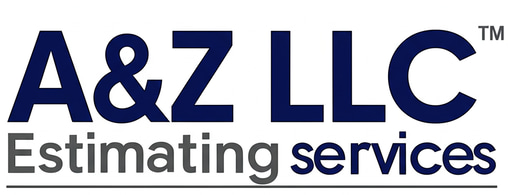5 Best Practices for Takeoffs in Construction
Abdul Rehman
2 min read


Construction takeoffs are crucial for accurately estimating project costs and ensuring profitability. A precise takeoff lays a strong foundation for successful project execution and helps avoid costly mistakes. Here are the five best practices to ensure accuracy, efficiency, and reliability in your takeoff process.
1. Standardize Your Takeoff Process
Consistency in your takeoff procedures reduces mistakes and enhances clarity among team members. Develop standardized checklists and templates to streamline your workflow, clearly document naming conventions, and establish strict version control measures. Whether you're conducting manual or digital takeoffs, a structured approach ensures that all details are captured consistently.
Key steps:
• Develop standardized templates for repeated project types.
• Clearly define naming conventions and file management practices.
• Regularly update templates to incorporate feedback and lessons learned.
2. Leverage Digital Takeoff Tools
Digital takeoff tools significantly enhance accuracy, efficiency, and collaboration within construction projects. These tools enable precise measurements, streamlined communication, and quick adjustments to plans. You can look for software that integrates seamlessly with estimating and project management systems.
Benefits include:
• Faster and more precise measurements.
• Real-time collaboration and cloud-based access.
• Improved accuracy in quantity calculations.
3. Verify and Cross-Check Quantities
Mistakes in measurements can lead to severe budget overruns. You can always verify your quantities by performing peer reviews and independent checks. Red-line drawings, use color-coding, and frequently cross-reference related documents.
Recommended practices:
• Implement a peer-review system for cross-checking takeoffs.
• Conduct spot checks at random points throughout the process.
• Watch for discrepancies caused by outdated or misaligned drawings.
4. Incorporate Real-World Conditions
Accurate takeoffs must account for real-world scenarios, including waste factors, site conditions, material spoilage, and access constraints. Adjusting your takeoffs based on site-specific realities ensures that budgets and schedules remain realistic and accurate.
Considerations include:
• Adjusting quantities to factor in waste and spoilage rates.
• Reviewing local building codes and regulations.
• Incorporating subcontractor feedback early in the process to capture accurate on-site conditions.
5. Maintain Clear Documentation and Version Control
Clear, thorough documentation ensures traceability and accountability. Robust version control helps teams quickly reference accurate documents, track changes, and streamline communication.
Essential practices:
• Use clear and consistent naming conventions for all documents.
• Employ cloud-based collaboration tools for real-time updates and easy access.
• Document all changes meticulously to provide transparency during audits and reviews.
Bonus Tips for Streamlining Construction Takeoffs
• Utilize keyboard shortcuts and batch imports to streamline tasks and save time.
• Offer internal training sessions and peer mentoring to enhance team skills continually.
• Conduct monthly quality assurance reviews to improve your process continually.
Frequently Asked Questions (FAQs)
What is the difference between a takeoff and an estimate?
A takeoff involves measuring quantities needed for construction, whereas an estimate assigns costs to those quantities to determine the project's budget.
How often should I update my takeoff templates?
Regular updates—at least quarterly—ensure templates reflect current standards, technologies, and learned efficiencies.
Can I still perform accurate takeoffs without CAD drawings?
Yes, but it requires meticulous manual measurement from physical plans or digitized PDFs, though digital takeoff software enhances accuracy and speed.
